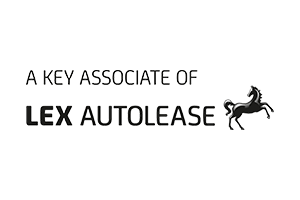With the recent changes to the Highway Code we thought now would be a good time to review other rules that many of us might not have thought of in years or that may have been updated without us realising it.
We all know that it’s a legal requirement for us to wear a seatbelt, but as the driver do you know your other seatbelt responsibilities? Don’t worry if the answer is no – we’ve got all the details in the article below!
Seatbelt Condition
Firstly, as the owner or driver of the vehicle it will be your responsibility to ensure that the seatbelts in the vehicle meet the legal standards.
Seatbelt condition will be tested as part of the MOT each year, for vehicles over three years old, and your car could fail its MOT if they are not in good enough condition.
During the test any visible part of all seatbelts will be tested, folded seats will be lifted to test those seatbelts if necessary. The test will include checking the locking mechanism and its release function and for those that retract the mechanism used to wind excess webbing.
These tests will ensure the seatbelts are in a good condition so that if you do have to brake suddenly they function correctly.
Who Needs to Wear a Seatbelt?
It has been a legal requirement for all drivers and front seat passengers to wear a seatbelt since 1983 and for rear passengers since 1991.
For some passengers, such as children, they might not directly wear the seatbelt themselves, but they must be secured into the vehicle by a form of restraint, such as a properly fitted car seat.
Though pets are not legally required to wear seatbelts it is advised they are restrained when travelling in the vehicle. We recommend investing in a travel carrier for smaller pets or a harness for larger animals.
Is the Driver Responsible for Passenger Seatbelts?
Yes. As the driver it will be your responsibility to ensure that all passengers are wearing appropriate seatbelts / in the correct child seat.
Legally, if you are stopped and anyone under the age of 14 years old is not wearing their seatbelt then it is the driver who pays up to £500 in fine per person. Additionally, if you are not wearing your seatbelt you can also be fined £500 for this.
For passengers over the age of 14 years old you will not be held responsible and fined if stopped, but as the driver you have a general moral responsibility to ensure all your passengers are as safe as possible which includes them wearing appropriate seatbelts.
Children and Seatbelts
If you are travelling with children in the car then you will be responsible for ensuring that any children in the vehicle, aged 14 and under, are in the appropriate car seat or wearing a seatbelt. This is regardless of whether you are responsible for the child outside of the vehicle, as the driver you will be the one in trouble if you are stopped and they are not appropriately seated.
A child cannot travel on their parent’s lap as a seatbelt should only ever be used for a single person, and again as the driver it is your responsibility to ensure that your younger passengers follow the rules on seatbelt use.
Children’s Car Seats
It’s important that you know the rules on children’s car seats if you regularly have children in your vehicle as it will be your responsibility to ensure they are correctly seated.
If they are over 12 years old or 135 cm tall then a child can travel without a car seat and simply use the regular seatbelt.
If they are younger than this and not as tall as 135 cm then they will be required to sit in a car seat. Until they reach these measurements the car seat that they use is determined by their weight.
There are three different types of car seats which are:
- Rear-facing car seats
- Front-facing car seats
- Booster seats
Rear-facing seats are secured into the vehicle with the child facing the rear of the car and are designed for babies and young toddlers. They fall into two weight classes, the first are suitable for children from birth up to 13 kg and the second will be suitable for children between 9 kg and 18 kg.
Front-facing seats are similar in design to rear-facing ones but the child faces the front of the car, as the rest of the passengers do. These are suitable for children who weigh between 9 kg and 18 kg.
The third type of seat that all children will transition to once they meet the weight requirement of booster seats which are 15 kg to 25 kg. They are available with back support or simply the seat part used to lift the child to an appropriate height so that they can use the regular seatbelt.
For a detailed breakdown of car seats and finding the correct one then take a look at our car seat guide.
There is an exception to the child seat rules in emergency journeys that are over a short distance for children three years old and above, when they are travelling in a minibus, minicab, taxi, coach or the rear of a van.
When You Don’t Have to Wear a Seatbelt
There are a few circumstances where you do not have to wear a seatbelt which include:
- When you are reversing or supervising a learner driver who is reversing
- In a vehicle being used for police, fire and rescue services
- As a passenger in a trade vehicle when you’re investigating a fault
- Driving a goods vehicle on deliveries that is travelling less than 50 metres between stops
- A licenced taxi driver plying for hire or carrying passengers
- If you have a medical exemption (you must carry your certificate of exemption from compulsory seatbelt wearing)
You might be given a medical exemption whilst pregnant or if you have a disability but this is not guaranteed or automatic and you will need to speak to your doctor about this as well. Please note that if you are given a medical exemption whilst pregnant then after you give birth you will need to wear a seatbelt again.
What If My Car Doesn’t Have Seatbelts?
If your car was originally made without seatbelts as classic models were up until the mid-1960s then you have no legal obligation to retroactively fit seatbelts.
You can still use the vehicle though you will not be able to have any children under the age of three as passengers.
Any child over three years old will be allowed in the vehicle but they must be seated in the back seats of the vehicle.

Take Our Test
Ready to test your knowledge? Simply try our quick test to see how much you know!
Quiz Maker - powered by Riddle
Enjoyed this article? Read more of our latest blogs below:
- Most Googled Car Questions Answered
- Cars We’re Excited to See in 2022
- Is it Illegal to Sleep in Your Car?
- Revealed: A Decade of UK Car Crimes
Want to know more about car leasing?
For all our latest news and blogs click HERE.
Looking for the next best car leasing deal? Check out our Top Leasing Deals.
Need to know more about leasing? Check out our Guide Pages.









Leave a Comment